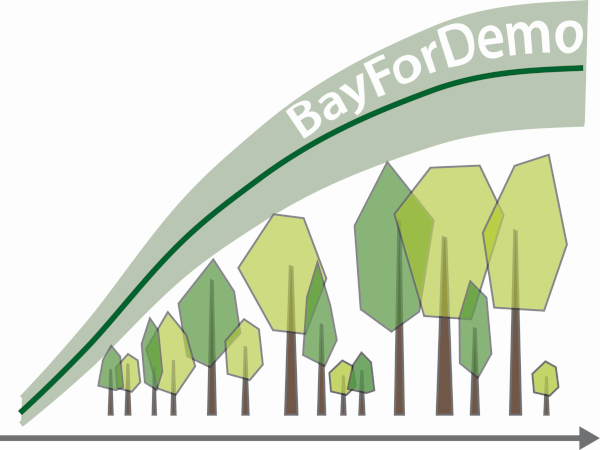
Forests are an integral component of the Bavarian landscape and merit special protection and appreciation because of their diverse ecosystem goods and services. As trees are long-living organisms, forests adapt to environmental changes much slower that more dynamic ecosystems. Hence, global climate change has a high potential to threaten forest ecosystems. This calls for robust predictive tools to improve the quantification of the long-term development of productivity, carbon sequestration and species composition of Bavarian forests.
This is where the project BayForDemo comes in: For the projection of forest development, an empirically parameterized simulation environment is developed that describes tree growth, mortality and regeneration in response to climate and biotic interactions. For calibrating this demographic simulator, information from a large variety of forest data sources is combined using Bayesian methods. By this means, also processes that are only poorly informed by observations, e.g. regeneration, can be calibrated. This approach allows for an improved understanding of the demographic diversity of European tree species, the intraspecific variability and the effects of environmental drivers.
Cycle of calibrating and applying the demographic simulator using Bayesian methods.
These data-driven projections of forest development have a high potential to improve the identification of vulnerable forest stands, the selection of tree species and the quantification of productivities. Additionally, it is possible to identify particularly uncertain subprocesses, tree species or regions and to systematically expand their monitoring. New data gathered this way can be integrated in the existing framework using flexible options of recalibration to continuously strengthen the simulation environment. The project BayForDemo thus contributes to the adaptive management of forest resources in Bavaria to maintain forest functioning in the future.